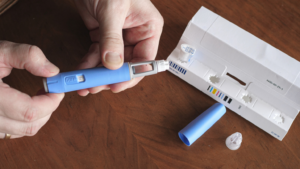Photodamage manifests itself through white or dark spots, redness, dilated pores, and thinning of the skin.
Summer walks have already begun, which is why, through the voice of a specialist, we tell you how you can protect your skin from damage caused by the sun.
According to Leopoldo de Velasco Graue, dermatological advisor at Hospital de la Luz in Mexico, there has been scientific evidence for years that ultraviolet radiation is carcinogenic to humans and can cause changes in the genetic material of our cells.
This is why the specialist stresses that the main reason to protect the skin from the sun’s rays is to prevent cancer, beyond cosmetic damage.
What does skin damage look like?
Photodamage can manifest itself through white or dark spots, redness, dilated pores, and thinning of the skin. “While collagen destruction is seen in the chronological aging process, the sun generates a process that increases the destruction of collagen fibers,” says De Velasco Graue.
Recommendations for skin care
According to the expert, sun protection should be applied daily and without exception. “Radiation is cumulative, even if you don’t have such intense doses daily, in the long term overcrowding can cause more damage,” explains the dermatologist.
In this regard, the dermatologist stresses that sunscreen should also be applied to areas that are covered by clothing since intermittent exposure causes the skin to become very susceptible to developing cancer.
On the other hand, she points out that the ideal is to apply sunscreen every three hours during the day and do it layer by layer. This process is even more important for those people who face conditions of photosensitivity, hyperpigmentation, and a history of skin cancer.
Other recommendations given by the specialist for skin care are:
- Avoid peak UV radiation hours, which are between 11 a.m. and 3 p.m.
- Use a hat, cap, umbrella, or any other mechanical photoprotection.
- Stay in the shade as much as possible.
- Do not use sunscreen or tanning beds.
- Resort to constant reapplication of sunscreen.
How to find the right sunscreen?
Always check that the selected product meets UVA protection and an SPF of 50 or more since these characteristics are suitable for skin care in conditions of greater sun exposure, recommends dermatologist Leopoldo de Velasco Graue.
For daily use, the expert indicates that a sunscreen with SPF 30 could be sufficient, and adds that some products help block the absorption of particles.
Finally, she points out that it is important to see a specialist when you notice any skin changes that persist for more than two weeks.























+ There are no comments
Add yours